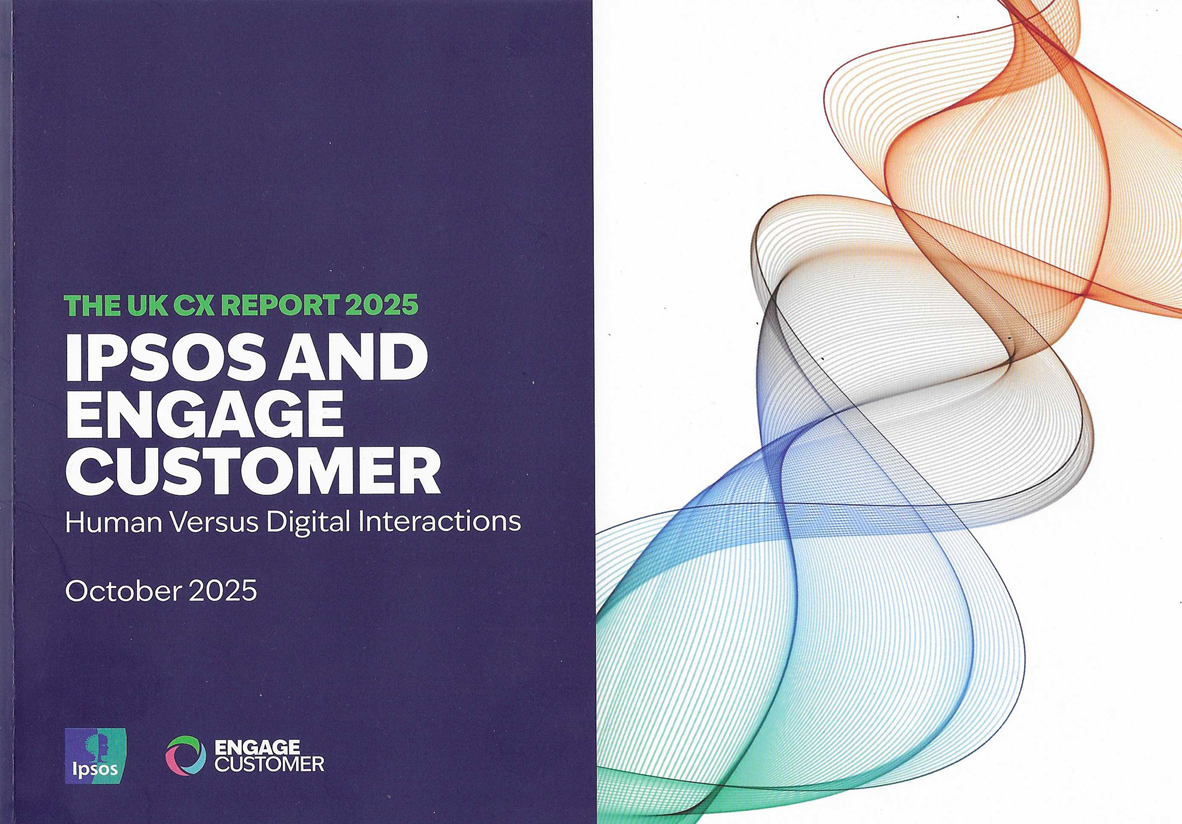October 10, 2025
Ipsos and Engage Report on Human vs. Digital Interactions in CX

Fresh from the Engage Customer Experience Summit, one of the main talking points was a new report from Ipsos and event host Engage.
Authored by Ipsos’ Jamie Thorpe and Matthew Chatterton, along with Nick Rust, MD at Engage, the report highlights the power of multichannel over single channels. How human interaction drives customer satisfaction, and where customer trust is essential for AI.
The Human vs. Digital Interactions introduction leads with “Human interaction remains a critical driver of customer satisfaction and trust, yet digitisation, automation and AI are all having a transformative effect on CX.”
Multichannel Insights and Statistics
Based on a survey of 5,000 UK consumers over 73 touchpoints and over 9,500 experiences, across the likes of automotive, mobile and online retail, the report generates plenty of interesting points. Key stats include that “80% of people feel customer service is becoming too automated and impersonal.”
Getting into the details, 43% of these customers have used more than one channel to engage with a brand. And multichannel leads to fewer “meh” experiences. As 59% of customers received varying levels of service across channels, consistency and seamless switching are key to creating more memorable experiences for consumers.
Vodafone’s TOBi, nominated for a Best use of Technology/AI Award at next week’s UK Customer Experience Awards finals, was cited in the report as, “designed to make customer service easier, blending multiple channels for a seamless experience.”
Human vs Digital Interactions
The key, and likely enduring, statistic in this section of the report is that “77% of customers value human interaction for complex or sensitive issues.” That doesn’t mean a “no” to digital, but finding the sweet spot of a blend of digital and human interactions is key to successful customer support and service.
Brands should focus on human-first approach, noting that many firms do not make it easy to find the human option on an IVR system or menu.
It also notes that human-then-digital interactions generate higher levels of satisfaction among consumers. And don’t think younger customers are all pro-digital, it found only 36% of under-35s strongly prefer a digital approach, with 37% asking to speak to a person.
Outside of the report, a recent coinciding comment from Lei Gao, Chief Technology Officer at SleekFlow, has one explanation why traditional efficiency metrics can miss the mark. “Most businesses track AI resolution rates and handling time, but they aren’t tracking whether customers are satisfied with AI-only interactions. A technically ‘successful’ AI conversation can still leave customers frustrated.”
Artificial Intelligence and CX
The key insight from the report in this segment is that AI is not yet elevating customer experiences. According to consumers, 40% felt AI made things worse, with only 31% finding an improvement in their service.
And 51% of them worry about the amount of personal information companies hold, while only 6% think they will benefit from AI, compared to the 58% who believe the business will benefit.
The report isn’t the only place this week where we’ve seen the insight about Klarna getting rid of large numbers of staff, only to have to rehire many as it struggled with AI customer experience. Suggesting that companies should take a more balanced and nuanced approach to CX.
Overall, the report shows there is a long way to go on AI, no matter what the CX and vendor cheerleaders say. The next edition will hopefully compare the start-ups that lack the budget or incentive for human support and the all-in-on-AI businesses, to see how their CX metrics stack up against more balanced competitors.



